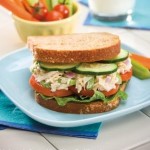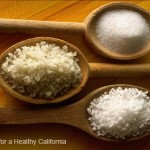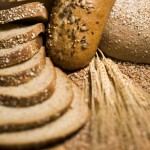Popular Topics
Heart Healthy Diets
Weight control and regular exercise are critical for keeping your heart in shape—but the food you eat may matter just as much. With heart disease still the number one cause of death of both men and women in the United States, this is important and heartening news.
Experts say that eating a heart-healthy diet can reduce your risk of heart disease or stroke by 80%.
By understanding how your food choices impact the health of your heart, you may be able to prevent or manage heart disease and high blood pressure. Learn which foods and methods of cooking are healthiest for your heart, and you can take greater control over the quality and length of your life.
You can take steps to prevent heart disease
In addition to exercise, being careful about what you eat—and what you don’t eat—can help you lower cholesterol, control blood pressure and blood sugar levels, and maintain a healthy weight.
Eat More:
- Healthy fats: raw nuts, olive oil, fish oils, flax seeds, or avocados
- Nutrients: colorful fruits and vegetables—fresh or frozen, prepared without butter
- Fiber: cereals, breads, and pasta made from whole grains or legumes
- Omega 3 and protein: fish and shellfish, poultry
- Calcium and protein: Egg whites, egg substitutes, skim or 1% milk, low-fat or nonfat cheeses or yogurt.
Eat Less:
- Trans fats from partially hydrogenated or deep-fried foods; saturated fats from whole-fat dairy or red meat
- Packaged foods of any kind, especially those high in sodium
- White or egg breads, refined pastas or rice
- Red meat, bacon, sausage, fried chicken
- Egg yolks, whole or 2 percent milk, whole milk products like cheese or yogurt
 Cut out saturated and trans fats
Cut out saturated and trans fats
Of all the possible improvements you can make to your diet, limiting saturated fats and cutting out trans fats entirely is perhaps the most important. Both types of fat raise your LDL, or “bad” cholesterol level, which can increase your risk for heart attack and stroke. Luckily, there are many ways to control how much saturated and trans fats you take in. Keep these culprits in mind as you cook and make food choices—and learn how to avoid them.
- Limit solid fat. Reduce the amount of solid fats like butter, margarine, or shortening you add to food when cooking or serving. Instead of cooking with butter, for example, flavor your dishes with herbs or lemon juice. You can also limit solid fat by trimming fat off your meat or choosing leaner proteins.
- Substitute. Swap out high-fat foods for their lower-fat counterparts. Top your baked potato, for example, with salsa or low-fat yogurt rather than butter, or use low-sugar fruit spread on your toast instead of margarine. When cooking, use liquid oils like canola, olive, safflower, or sunflower, and substitute two egg whites for one whole egg in a recipe.
- Be label-savvy. Check food labels on any prepared foods. Many snacks, even those labeled “reduced fat,” may be made with oils containing trans fats. One clue that a food has some trans fat is the phrase “partially hydrogenated.” And look for hidden fat; refried beans may contain lard, or breakfast cereals may have significant amounts of fat.
- Change your habits. The best way to avoid saturated or trans fats is to change your lifestyle practices. Instead of chips, snack on fruit or vegetables. Challenge yourself to cook with a limited amount of butter. At restaurants, ask that sauces or dressings be put on the side—or left off altogether.
Not all fats are bad for your heart
 While saturated and trans fats are roadblocks to a healthy heart, unsaturated fats are essential for good health. You just have to know the difference. “Good” fats include:
While saturated and trans fats are roadblocks to a healthy heart, unsaturated fats are essential for good health. You just have to know the difference. “Good” fats include:
- Omega 3 Fatty Acids. Fatty fish like salmon, trout, or herring and flaxseed, canola oil, and walnuts all contain polyunsaturated fats that are vital for the body.
- Omega 6 Fatty Acids. Vegetable oils, soy nuts, and many types of seeds all contain healthy fats.
- Monounsaturated fats. Almonds, cashews, peanuts, pecans, and butters made from these nuts, as well as avocados, are all great sources of “good” fat.
Choose foods that lower cholesterol
 Unhealthy cholesterol levels increase your risk for heart disease, so keeping yours low is key to a healthier heart. Your diet is central to controlling your cholesterol. Some foods can actually lower your cholesterol, while others only make matters worse.
Unhealthy cholesterol levels increase your risk for heart disease, so keeping yours low is key to a healthier heart. Your diet is central to controlling your cholesterol. Some foods can actually lower your cholesterol, while others only make matters worse.
- Avoid saturated or trans fats. Foods containing high levels of saturated fats or trans fats—such as potato chips and packaged cookies—can increase your cholesterol levels much more significantly than cholesterol- containing foods such as eggs. Saturated fat and trans fat both increase LDL (“bad”) cholesterol. Even worse, trans fat lowers your levels of HDL (“good”) cholesterol.
- Make smart choices. Choose foods rich in unsaturated fats, fiber, and protein. Fruits, vegetables, fish, beans, nuts, and seeds are all great cholesterol regulators. The best foods for lowering cholesterol are oatmeal, fish, walnuts (and other nuts), olive oil, and foods fortified with sterols or stanols—substances found in plants that help block the absorption of cholesterol.
- Remember that labels can be deceiving. Navigating food labels can often be complicated since packaged foods with labels like “cholesterol free” or “low cholesterol” aren’t necessarily heart-healthy; they might even contain cholesterol that’s heart-risky. Stick to basics whenever possible: fruit, veggies, nuts, and lean proteins.
Lowering your cholesterol with fish or fish oil supplements
By adding fish like salmon or herring to your diet twice a week, you can significantly lower your cholesterol, and thus your risk for heart attack. Fish contain omega-3 fatty acids, which work like superheroes, doing good deeds for your heart—and your whole body.
Steer clear of salt and processed foods
 Eating a lot of salt can contribute to high blood pressure, which is a major risk factor for cardiovascular disease. Reducing the salt in your food is a big part of a heart-healthy diet. The American Heart Association recommends no more than about a teaspoon of salt a day for an adult. That may sound alarmingly small, but there are actually many painless—even delicious—ways to reduce your sodium intake.
Eating a lot of salt can contribute to high blood pressure, which is a major risk factor for cardiovascular disease. Reducing the salt in your food is a big part of a heart-healthy diet. The American Heart Association recommends no more than about a teaspoon of salt a day for an adult. That may sound alarmingly small, but there are actually many painless—even delicious—ways to reduce your sodium intake.
- Reduce canned or processed foods. Much of the salt you eat comes from canned or processed foods like soups or frozen dinners—even poultry or other meats often have salt added during processing. Eating fresh foods, looking for unsalted meats, and making your own soups or stews can dramatically reduce your sodium intake.
- Cook at home, using spices for flavor. Cooking for yourself enables you to have more control over your salt intake. Make use of the many delicious alternatives to salt. Try fresh herbs like basil, thyme, or chives. In the dried spices aisle, you can find alternatives such as allspice, bay leaves, or cumin to flavor your meal without sodium.
- Substitute reduced sodium versions, or salt substitutes. Choose your condiments and packaged foods carefully, looking for foods labeled sodium free, low sodium, or unsalted. Better yet, use fresh ingredients and cook without salt.
 Rekindle home cooking
Rekindle home cooking
It’s very difficult to eat right for your heart when you’re eating out a lot, ordering in, or eating microwave dinners and other processed foods. The good news is that you can learn to make quick, heart healthy meals at home. It’s easier and less time-consuming than you may think.
Heart-healthy grocery shopping and stocking
Creating a heart-friendly diet starts with stocking your fridge with healthy and accessible foods. Prepare a list before you head to the store or farmer’s market, and leave a little time after your trip to set yourself up for success during the week.
Look at labels
While scanning the aisles of a grocery store in the U.S., look for foods displaying the American Heart Association’s heart-check mark to spot heart-healthy foods. This logo means that the food has been certified to meet the American Heart Association’s criteria for saturated fat and cholesterol.
- Make healthy substitutions. Choose substitutions like 1% or skimmed milk instead of whole milk, soft margarine for butter, and lean meats like chicken and fish in place of ribs or ground meat. These substitutions can save you an entire day’s worth of saturated fat.
- Make foods ready-to-eat. When you make healthy food easy to grab during your busy week, you’re more likely to stay heart-healthy. When you come home from grocery shopping, cut up vegetables and fruits and store them in the fridge, ready for the next meal or when you are looking for a ready-to-eat snack.
- Use your freezer. Make healthy eating easier by freezing heart-healthy foods in individual portions. Freeze fruits such as bananas, grapes, and orange slices to make them more fun to eat for children. Be careful with portion sizes: the recommended serving of cooked meat is about the size of a deck of cards, while a serving of pasta should be about the size of a baseball.
Heart-healthy cooking tips
When you prepare and cook meals at home, you have better control over the nutritional content and the overall healthfulness of the foods you eat. An added bonus: you can also save money.
- Create a library of heart-healthy recipes. Stock up on heart-healthy cookbooks and recipes for cooking ideas. The internet is full of food blogs and websites devoted to healthy cooking methods and recipes, and a local library can be a great source for cookbooks as well.
- Use heart-healthy cooking methods. Just as important as picking healthy foods at the grocery store is how you cook those foods into healthy meals. Use low-fat methods: you can bake, broil, microwave, roast, steam, poach, lightly stir fry, or sauté—using a small amount of vegetable or olive oil, reduced sodium broth, and spices.
Focus on high-fiber foods
A diet high in fiber can lower “bad” cholesterol and provide nutrients that can help protect against heart disease. By filling up on whole grains, vegetables, and fruits, you can get most of the fiber you’ll need, which means you’ll also be lowering your risk of heart disease.
 Go for whole grains
Go for whole grains
Refined or processed foods are lower in fiber content, so make whole grains an integral part of your diet. There are many simple ways to add whole grains to your meals.
- Breakfast better. For breakfast choose a high-fiber breakfast cereal—one with five or more grams of fiber per serving. Or add a few tablespoons of unprocessed wheat bran to your favorite cereal.
- Try a new grain. Experiment with brown rice, wild rice, barley, whole-wheat pasta, and bulgur. These alternatives are higher in fiber than their more mainstream counterparts—and you may find you love their tastes.
- Bulk up your baking. When baking at home, substitute whole-grain flour for half or all of the white flour, since whole-grain flour is heavier than white flour. In yeast breads, use a bit more yeast or let the dough rise longer. Try adding crushed bran cereal or unprocessed wheat bran to muffins, cakes, and cookies.
- Add flaxseed. Flaxseeds are small brown seeds that are high in fiber and omega-3 fatty acids, which can lower your total blood cholesterol. You can grind the seeds in a coffee grinder or food processor and stir a teaspoon of them into yogurt, applesauce, or hot cereal.
 Eat a variety of fruits and vegetables
Eat a variety of fruits and vegetables
Most fruits and vegetables are low in calories and high in fiber, making them heart healthy. You can use some of the following strategies to make eating fruits and veggies part of your diet every day.
- Keep fruit and vegetables at your fingertips. Wash and cut fruit and veggies and put them in your refrigerator for quick and healthy snacks. Choose recipes that feature these high-fiber ingredients, like veggie stir-fries or fruit salad.
- Incorporate veggies into your cooking. Add pre-cut fresh or frozen vegetables to soups and sauces. For example, mix chopped frozen broccoli into prepared spaghetti sauce or toss fresh baby carrots into stews.
- Don’t leave out the legumes. Legumes are fiber-rich, too. Eat more beans, peas, and lentils. Add kidney beans to canned soup or a green salad.
- Make snacks count. Fresh and dried fruit (preferably without added sugar), raw vegetables, and whole-grain crackers are all good ways to add fiber at snack time. An occasional handful of nuts is also a healthy, high-fiber snack.
 Control portion size—and your weight
Control portion size—and your weight
Gaining or carrying excess weight means that your heart must work harder, and this often leads to high blood pressure—a major cause of heart disease. Achieving a healthy body weight is key to reducing your risk of heart disease. Reducing portion sizes is a crucial step toward losing or maintaining a healthy weight. Try the following tactics to control your portion sizes:
- Understand serving sizes. A serving size is a specific amount of food, defined by common measurements such as cups, ounces, or pieces—and a healthy serving size may be a lot smaller than you’re used to. The recommended serving size for pasta is ½ cup, while a serving of meat, fish, or chicken is 2 to 3 ounces. Judging serving size is a learned skill, so you may need to use measuring cups, spoons, and a food scale to help.
- Eyeball it. Once you have a better idea of what a serving should be, you can estimate your portion. You can use common objects for reference; for example, a serving of pasta should be about the size of a baseball, while a serving of meat, fish, or chicken is about the size and thickness of a deck of cards.
- Beware of restaurant portions. Portions served in restaurants are often more than anyone needs. Split an entrée with your dining companion, or take half your meal home for tomorrow’s lunch.
Source: Helpguide.org in collaboration with Harvard Health Publications
Authors Jocelyn Block, M.A. and Melinda Smith, M.A.

